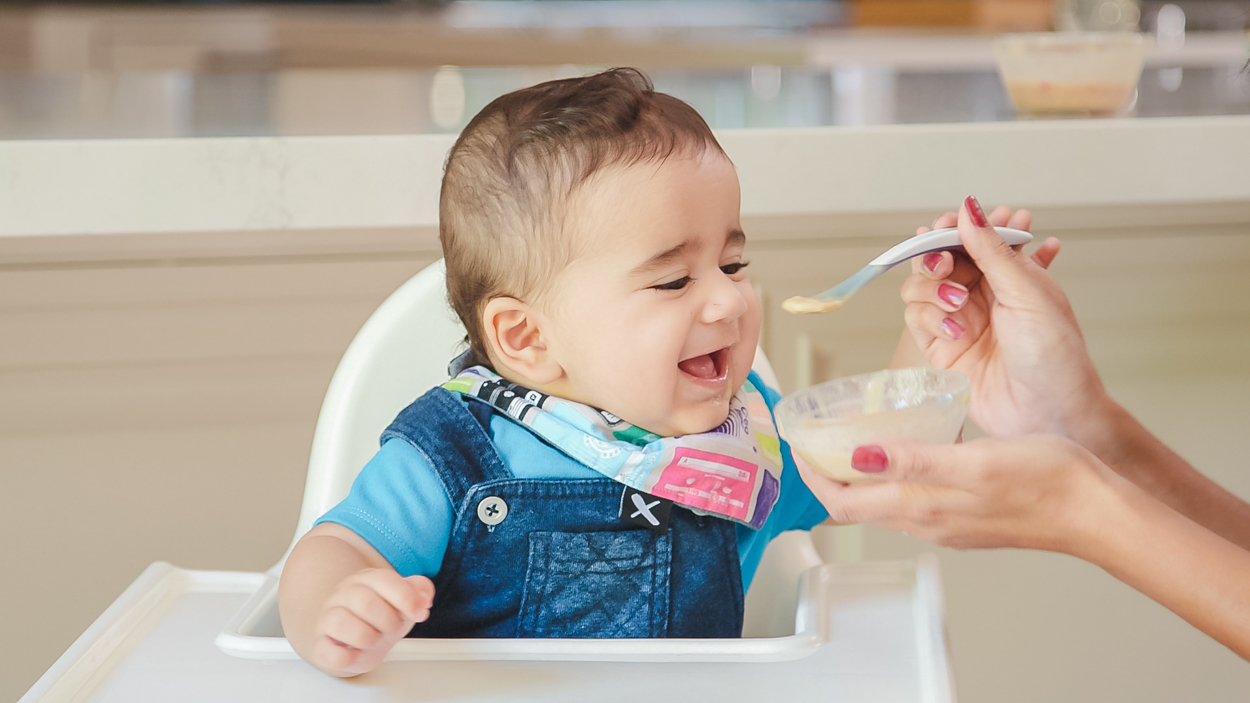

Long before I got that little plus sign on a pregnancy test, I was determined to raise a kid who would eat more than white bread and buttered noodles. I’m a food writer and my husband is “the food guy” at a brewery, which means our lives revolve around food. So, when my son was approaching the six-month mark, I started excitedly thinking about what his first spice would be.
It was ginger, in pureed carrots, and I gave it to him exactly seven days after his first bite of solid food. In that same meal, I offered mashed avocado with cumin and black pepper. The next day, he got sweet potatoes with coconut milk and ginger at lunch, then avocado with garlic, cumin, and (gasp!) a tiny bit of cayenne pepper for dinner. A few days later, I put masala curry powder in his peas. He always finished it and grunted for more.
I’m fully aware I broke all the damn rules — the ones that say to start with cereal, move onto a tablespoon or two of plain purees, wait four days before between introducing new foods, then surrender to a decade of crustless peanut butter sandwiches and mealtime meltdowns. But I always assumed this bland baby food trend was just a bland American thing, and when friends or family would look at me like I was crazy — or straight up tell me I was — I’d shoot back something along the lines of, “Do you really think babies in [insert any country known for its spicy cuisine] are eating pureed peas and water?” Unfortunately, my friend Ameet, who was born and raised in Mumbai, at least partially debunked my theory when he checked in with his mother at my request. While toddlers in India may be happily scarfing down kormas and curries, plain lentils and rice are apparently fairly customary first solids for Indian infants.
Still, spices were a staple of my son’s diet long before he turned one. I’m willing to chalk some of that up to my own diet, since studies have shown that the foods a mother eats during pregnancy and breastfeeding can help shape a baby’s tastes. But it’s more likely that introducing spices early had the biggest effect on my son’s palate.
Okay, I’m not a doctor — and apparently not even very well-versed in what babies around the world actually eat — but here are seven things that worked for me when introducing spices to my baby.
1) Skip the cereal. I know; there are so many adorable videos of babies taking — or tossing — their first bites of that gloopy rice cereal. And it’s fortified! Or enriched. Or whatever. But babies get most of the nutrients they need in the first year from breastmilk or formula, and veggies have nutrients, too. Plus, starting your little one on starchy cereals is just going to help her develop a taste for carb-heavy foods. (Pass the bread basket!)
2) Spice early and spice often. If your baby gets used to plain veggie purees over the course of a few months, you might get some pushback (er, spit-out) when you finally introduce spices. But if you begin incorporating little bits of bold flavors within a week or two of starting solids, your baby won’t be shocked and appalled when suddenly there’s turmeric in his peas.
3) Start small. Obviously, you shouldn’t dump a tablespoon of cinnamon into a half-cup of applesauce, but the spice should still be detectable. Add a pinch, mix it up, and try it it yourself. If you can taste the seasoning, baby will, too. And if it’s too spicy for you, it’s definitely too spicy for baby.
4) Keep it simple. This doesn’t have to be complicated, I promise. Sure, I roasted sweet potatoes and carrots before pureeing them, but it’s easy to mash a banana or avocado with a fork, and frozen peas thaw quickly in hot tap water. And if you’d rather just add spices to jarred baby food, that’s fine, too! Here are some quick combinations to get you started:
Avocado: Cumin or Black Pepper
Carrots: Ginger, Curry Powder, or Cinnamon
Peas: Turmeric or Curry Powder
Sweet Potatoes: Ginger, Cinnamon, or White Pepper
Apples: Cinnamon or Ginger
Banana: Cinnamon or Vanilla Bean
5) Hold the salt! Too much salt is bad for babies’ kidneys, and they get a small amount of sodium from breast milk or formula, anyway. Even if these concoctions taste bland to you, all these new flavors and textures are very exciting for your little bundle of joy who, up until this point, has only ever tasted breastmilk or formula.
6) Keep a log. Medical experts usually advise waiting three to five days between introducing new foods, as an easy way to determine the source of possible allergic reactions. That said, because neither my husband nor I had any major food allergies in our families — and because I am the most impatient person on the planet — we sped things up a bit and I just kept a log of everything he ate and when. (It’s fun to look back on it now, too!)
7) Trust your own gut. Our pediatrician recommended introducing some crazy stuff like wasabi really early on. And while I was pretty adventurous, wasabi seemed like a cruel thing to do to a baby. I decided to wait until he asked for it, and about a week before his second birthday, he pointed to the green stuff on my sushi platter and said, “Teddy eat that, Mama!” I was able to warn him it was very spicy, which he clearly understood. And you know what? He took a bite, made a funny face, and said, “Too spicy!” Then he asked for more.
Of course, I’m fully prepared for the day he refuses anything but mac-and-cheese and Go-Gurt. But I still think I’ve set him up for a life of adventurous — and hopefully somewhat healthful — eating.
Now, somebody pass me the bread basket. Seriously.







